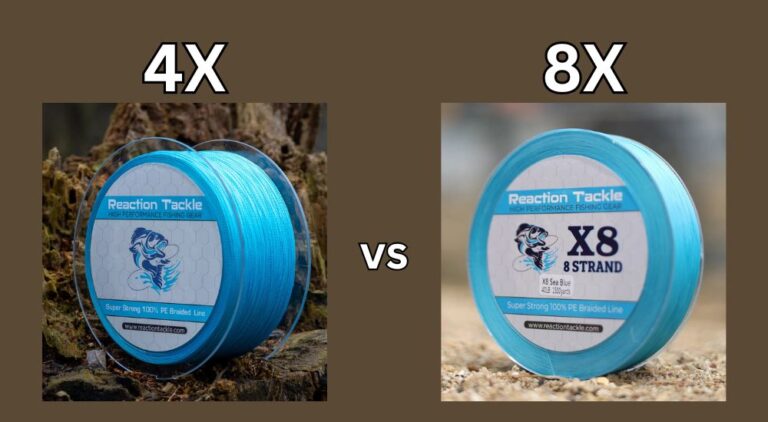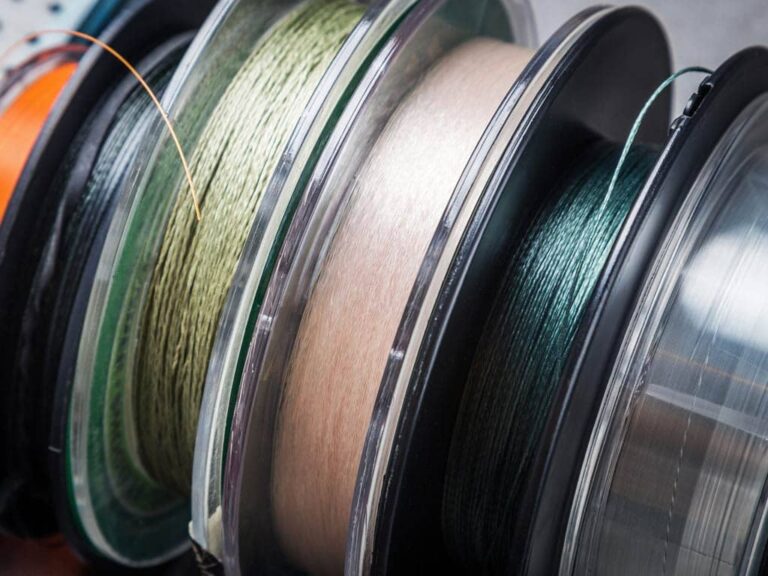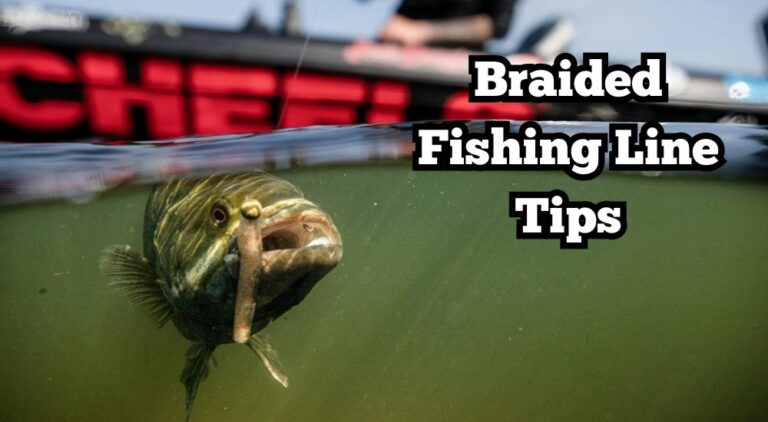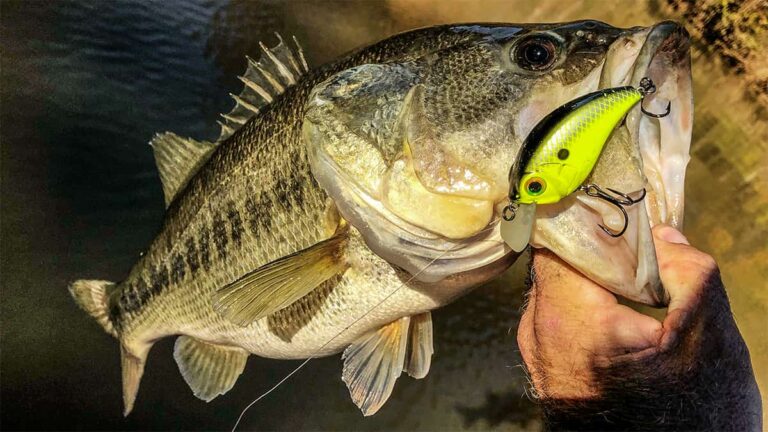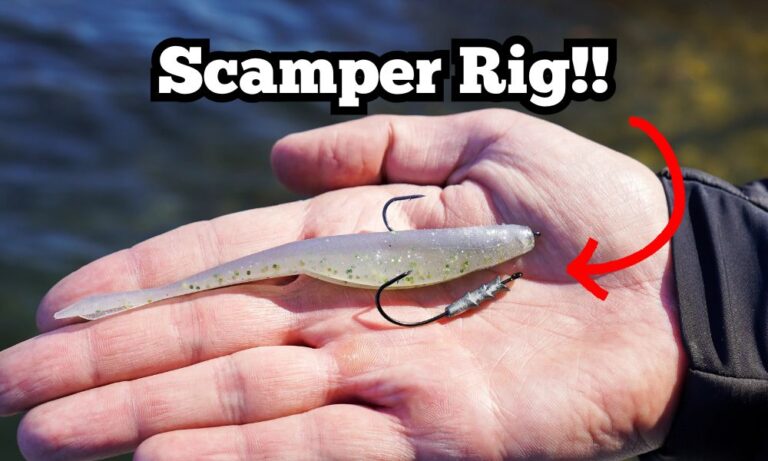How to Choose the Right Fishing Line for Every Situation
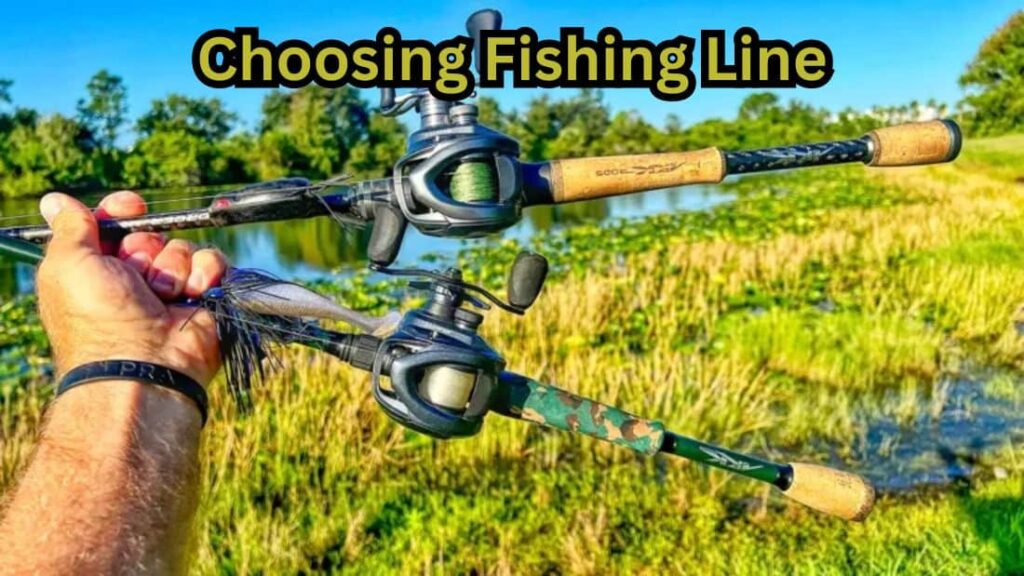
Fishing line can seem a bit intimidating. There are a bunch of different types, and unless you are incredibly experienced, it much seem extremely complicated.
So I’ll keep it simple and break down all the important stuff you need to know to choose the right fishing line.
Why Proper Line Selection is So Important
Choosing the right fishing line is essential for any angler because it impacts your success and overall experience.
The line’s strength and durability must match the species you’re targeting; a weak line might break, while one that’s too strong reduces sensitivity.
Sensitive lines like braid help detect subtle bites, especially in deep water. Low-visibility lines, such as fluorocarbon, are less likely to spook fish in clear waters.
Abrasion resistance is crucial for rough environments, making monofilament and fluorocarbon ideal.
Thinner lines offer longer and more accurate casts. Line stretch affects hook setting; monofilament prevents pull-outs, while braid provides immediate sets.
Environmental factors also influence line performance, with different lines excelling under specific conditions.
Proper line selection enhances your fishing success and enjoyment.
Braided Line

Characteristics
Braided line is very similar in appearance to sowing thread or any other kind of very thin rope.
It is made out of 6-10 strands of fiber braided around each other, hence the name.
This braiding technique gives the line much more strength compared to other lines.
This extra strength makes braided fishing line much thinner than other lines, even at the same strength capacity.
Now braided line is very visible. It doesn’t blend into the water at all, and is not the most natural looking presentation.
Braid is also very flexible and won’t coil up like some other types of line.
And maybe the most important part about braided line is that it doesn’t stretch at all. This gives you direct contact with your lures.
Also Read: Top 3 Braided Fishing Line Tips
Pros and Cons
Pros:
- Very Thin: This gives you better casting distance and allows you to hold more line on the spool.
- Zero Stretch: Having no stretch gives you much more sensitivity and connection to your baits. But even more important than that, it gives you much more power for your hook sets which helps to drive thicker hooks into the bass’ mouth.
- No Memory: Braided line won’t shape to your spool or coil up. This makes it much easier to fish with and reduces the amount of tangles you get.
Cons:
- Very Visible: Fish can see braided line very easily. Especially in clear water, it can spook them or drive them away from biting.
- Expensive: Price is always a major consideration when choosing fishing equipment. And braid is definitely at the top of the price range.
When to Use Braid
For the most part, you are going to use braided line when you are fishing with thick hooked lures.
Things like jigs, frogs, and Texas rigs have one or two rather thick hooks.
You need the extra strength and the zero stretch to really drive those hooks into the bass’s mouth.
Other lines will stretch too much and absorb lots of the power, causing the hook to not penetrate.
And you will loose a lot of fish. However, braid becomes much more versatile when you use a leader line.
If you tie on a leader of one of the following line types, you line becomes much less visible and allows you to fish with braid, even in clear water.
Fluorocarbon Line
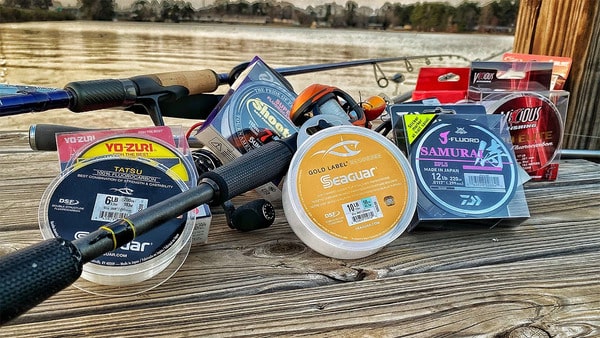
Characteristics
Flurocarbon is made to be clear. It is virtually invisible underwater, even in ultra clear water.
Rather than reflecting light, fluorcarbon absorbs and redirects it.
This sounds a bit strange, but all you really need to know is that fluorocarbon is the most invisible type of fishing line out there.
It is a bit thicker than braid, so casting distance is reduced by a bit. Fluoro also tends to be a bit stiffer than other lines.
This can be a bit frustrating when you are using 20+lb lines, but anything under that won’t give you any issues.
When it comes to stretch, fluorocarbon is right in the middle. It has about 6-10 % stretch, with is more than braid, but less than mono.
Pros and Cons
Pros:
- Virtually Invisible: This is very important in very clear water or when bass get finicky. The stealthy, invisible line can’t be seen, so bass are much less on edge around your baits.
- Minimal Stretch: Although fluorocarbon does stretch a bit, you can still get away with throwing some thicker hooks. Especially if you are using heavier pound test line, which is very doable with invisible line.
Cons:
- Sinks: Fluorocarbon is a sinking line. This isn’t an issue the majority of the time, but if you want to throw topwater lures, it is a big problem. The sinking line will pull your bait down a bit and mess up the action and effectiveness of the topwater lure.
- Stiffness: Like I mentioned earlier, this is only really an issued when using fluorcarbons above 20 lb test. But when fishing glide baits, big crankbaits, or other lures that require some thicker line, it can be a bit difficult to tie knots and make casts.
- Price: Again, price is a bit of an issue with fluorocarbon. The price will come in at about the same as braided line. It gets very expensive if you want to spool up more than one reel with this stuff.
When to Use Fluorocarbon
Fluorocarbon is ideal for pretty much any clear water situation. That invisibility makes such a huge difference when bass can see well.
Additionally, pretty much any time you are finesse fishing, fluorocarbon is the best choice.
Finesse fishing requires subtle, realistic presentations that are hard to achieve with other line types.
Monofilament Line
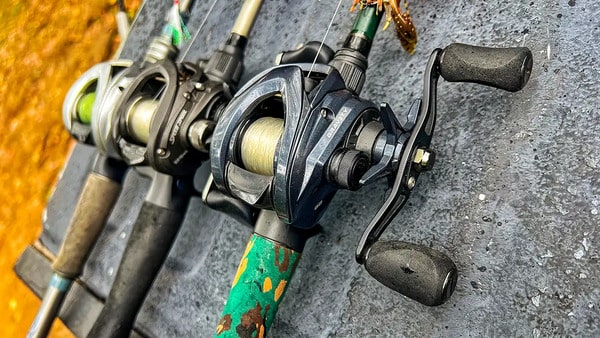
Characteristics
Monofilament line is not used very much any more. It is extremely stretchy, which makes setting the hook very difficult.
Mono is also much easier to see than fluorocarbon line. Of course, it is still relatively see through, but in clear water, you can spot it pretty easily.
Monofilament also floats, which actually does come in handy sometimes.
Pros and Cons
Pros:
- Floating: If you are fishing topwater lures, primarily treble hooked lures, it helps a lot to have a floating line. And braid is far too visible a lot of the time, so monofilament is kind of your only option.
- Stretch: The stretchiness of mono is a double edged sword. The positive side is that when you are fishing crankbaits, or other treble hooked lures, the stretch helps to get a better hook set with the smaller hooks. And that extra resistance can also keep bass on better with those same lures.
- Price: Monofilament is the flip side of the price conversation. It is incredibly cheap. You can spool 3-5 reel with mono for the same price as braid and fluoro.
Cons:
- Stretch: The other side of the sword is that it is very hard to set the hook with any lure that has single or dual hooks. The stretch just absorbs too much power and doesn’t get the hook deep enough into the fish’s mouth. Unless you are using treble hooks, you will miss a lot of fish with monofilament.
When to Use Monofilament
Really the only time you can effectively use monofilament is when using treble hooke lures.
This is a bit of a shame because monofilament is very cheap, but the reality is that mono is just not as good as the others.
Now if you are a beginner fisherman and you are just trying to get better at fishing, I highly suggest monofilament.
Mono is super cheap and super durable, which makes it perfect for less experienced anglers who are just trying to learn all the basics.
Reeling this In
Each type of line—braided, fluorocarbon, and monofilament—has distinct characteristics that make it suitable for specific situations.
Braided line offers strength, sensitivity, and flexibility, but its visibility and cost can be drawbacks. Fluorocarbon is nearly invisible underwater and minimally stretches, ideal for clear water and finesse fishing, though its sinking nature and stiffness can pose challenges.
Monofilament, while affordable and useful for topwater lures, lacks the strength and sensitivity needed for more demanding fishing scenarios.

